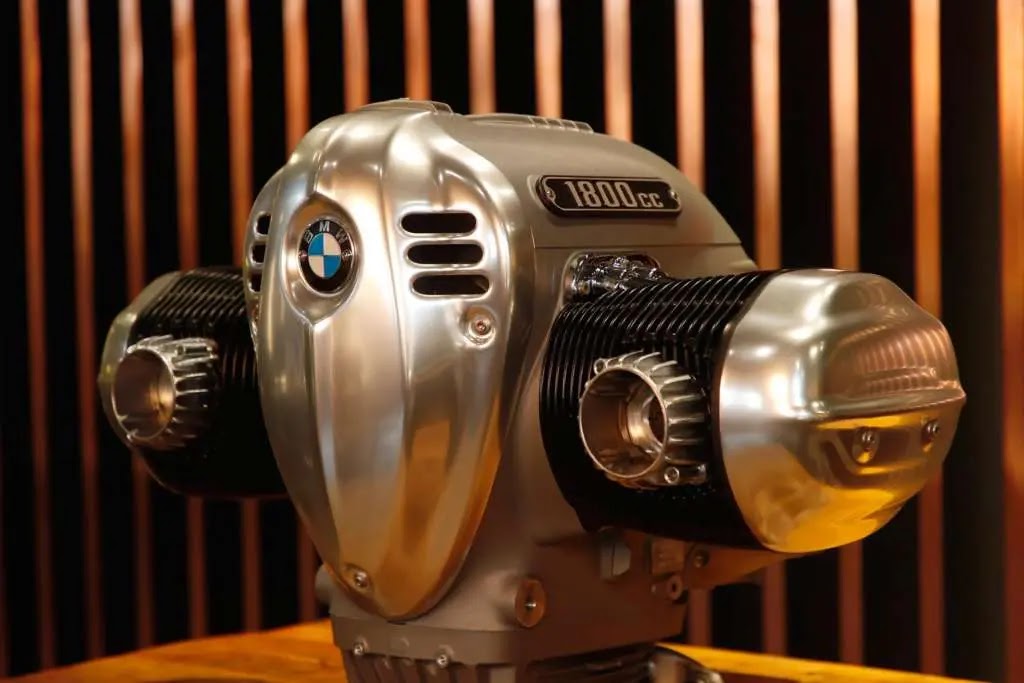
Single Cylinder Engine
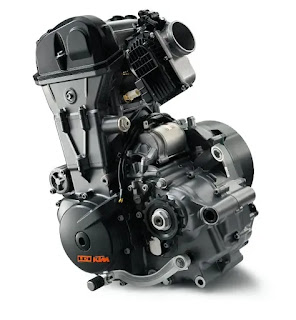
A piston engine with only one cylinder is known as a single-cylinder engine, commonly termed a thumper.
They’re frequently seen in vehicles like motorcycles, scooters, go-karts, all-terrain vehicles, radio-controlled cars, and even hand tools and garden machines…
Advantages
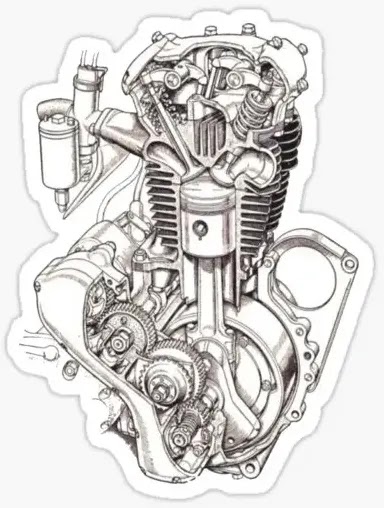
Single-cylinder engines tend to be more uncomplicated and more compact than multi-cylinder engines.
When it comes to cooling single-cylinder engines, airflow around the cylinder is often more effective because of this.
Compared to liquid-cooled engines, air-cooled single-cylinder engines are lighter and more sophisticated.
Disadvantages
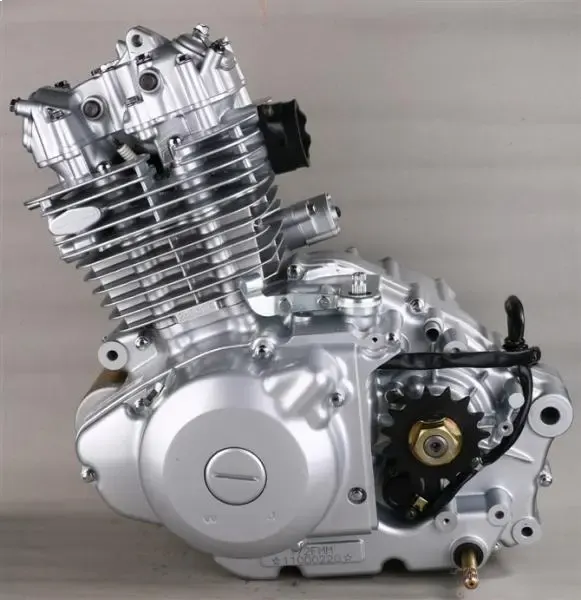
Power delivery that is more pulsing throughout each cycle, as well as higher degrees of vibration
a single-cylinder engine frequently requires a heavier flywheel than an equivalent multi-cylinder engine due to the uneven power distribution.
They frequently use balance shafts and other more aggressive measures to keep vibration levels down because a multi-cylinder engine commonly uses a balance shaft. In contrast, a single-cylinder uses a dummy connecting rod. This new balance mechanism could weigh down single-cylinder engines with the amount of weight saved and with decreased complexity.
Inline-Twin Engine
an inline-twin is also known as a straight twin-engine, vertical-twin, or parallel-twin is a two-cylinder piston engine in which two cylinders are arranged in a line along with a shared crankshaft. A straight-twin engine has two cylinders that are parallel to each other.
Automobiles, maritime boats, snowmobiles, jet skis, all-terrain vehicles, tractors, and ultralight aircraft are all powered by straight-twin engines. Straight-twin engines are also utilized in straight-twin bikes.
Advantages
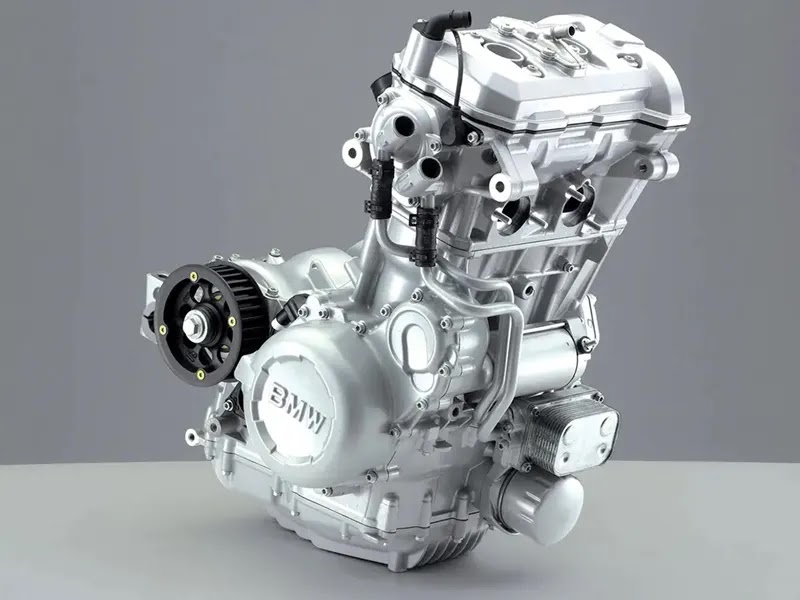
Straight-twin engines are more compact than V-twin engines and flat-twin engines, and they have a simpler design that is less expensive to manufacture.
Twins are capable of reaching faster top speeds than singles. Because of this, they are favoured on track days.
Twins are often chosen over 500cc since their power ratios become more favourable as compared to singles.
Disadvantages
Straight-twin engines are susceptible to vibration, either due to the irregular firing interval present in 180° crank engines or due to the large encountered reciprocating mass present in 360° crank engines.
In addition, inline-twins are more susceptible to torsional torque reactions and vibration.
V-Twin Engine
Unified twin-cylinder piston engines (V-twin engines) are two-cylinder piston engines connected by a shared crankshaft and configured in the V configuration. V-twin engines are commonly used in small vehicles.
Gottlieb Daimler built one of the world’s earliest V-twin engines in 1889, and it is still in use today. In addition to being employed as a stationary engine, it was also used in boats and in the Daimler Stahlradwagen (“steel-wheeled car”), which was Daimler’s second automobile. Panhard et Levassor, a French company that manufactured the engine under license, also produced the engine.

Although any ‘V angle’ between zero and 180 degrees is theoretically attainable for a V-twin engine, in practice, angles smaller than 40 degrees are rarely used. The most frequent V angle for a V-twin engine is 90 degrees, which can produce a perfect primary balance (assuming the correct counterweight is employed) like most Ducatis, most Moto Guzzis, the Honda RC51, Suzuki TL1000S, and TL1000R
Advantages
- Good balancing: The two cylinders of the car engine balance each other, resulting in weight savings and increased vehicle economy.
- Great air cooling: Because the hot air from the four-cylinder is thrown straight into the other cylinder, the V-twin engine provides excellent air cooling. Engines that are air-cooled or liquid-cooled perform equally well.
- V-type engines are tiny and lightweight when compared to other engine designs, making them ideal for small vehicles.
- Due to its excellent power-to-weight ratio, the V-twin engine is found in approximately 8.4 percent of high displacement motorcycles, cruisers, and touring bikes, among other applications. In addition to helping to balance the cars, having the two cylinders at 90 or 180 degrees enables them to be smooth and easy to adjust the power.
- Wide range of applications: Because of the tiny size of the V-type engine, it can be utilized in a variety of vehicles when space is limited, such as motorcycles, small tractors, and electrical generators.
- Legroom: When compared to other bikes in the same class, a low-mounted v-twin provides more legroom as well as superior maneuverability.
- V-twin engines are available in a variety of configurations, including air-cooled and liquid-cooled, transverse, OHV, OHC, and inline configurations, among others.
- Increased speed: V-twin engines feature two large pistons that move in opposite directions and at the same time. When compared to inline engines of the same size with four pistons, this causes them to spin at their maximum speed, producing more peak torque and horsepower.
- Torque: V-twin engines are extremely competitive and produce more torque at the same or lower RPMs than their single-cylinder counterparts. The power distribution of the V-type engine is rather linear in comparison to other engines. High torque makes it simple to reach the engine’s full potential.
- V-twin engines are unique in that they are thin and help to keep your motor from sagging side to side by stacking the cylinders from the front to the back or by maintaining the transverse crank. The engines are one-of-a-kind and simple to maintain.
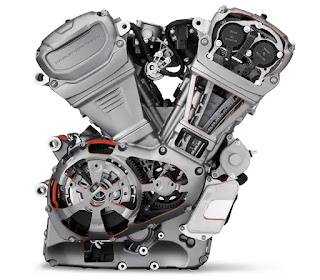
Disadvantages
- Vee-twins with one cylinder pitched horizontally and the other vertically maintain equilibrium in the motorcycles and decrease unwanted vibration, which is a significant issue with all v-twins, to a minimal degree.
- Vibrations in the automobile caused by unbalanced cylinders: If the cylinders are not properly aligned and the angle between them is less than 90 degrees, the engines become unstable, causing some vibrations in the car.
- Although the vehicle’s horsepower is reduced due to the V-twin engine, the vehicle’s torque is increased significantly due to the engine. Engines with higher intake velocity provide more peak horsepower than engines with lower intake velocity.
- Low fuel economy: Because the two engine cylinders consume more fuel, you should expect to spend more money on fuel overall.
- Although the engine can be excellent for some street bikes, many v-twins engines are unreliable when producing power and performance.
- Valves that are too loud: The valve train of a V-twin engine has more significant frictional losses than a single-cylinder engine, which influences the piston speed. The reliability of your motorcycle’s rings can also be affected by piston difficulties.
- Its characteristic sound comes from the firing differences in the V-twin engine with two cylinders, which produces a distinctive sound as you ride.
- Unequal firing: Because of the 90-degree configuration, the first cylinder fires at 270 degrees of the crankshaft, resulting in an uneven firing interval with the second cylinder.
- The V2 engine’s layout results in an unequal distribution of airflows, which causes cooling problems on the back cylinder. The rear cylinder has a limited amount of airflow because of this.
Flat-Twin Engine
One type of flat-twin engine is an internal combustion engine with two cylinders that are placed oppositely to the crankshaft, known as a flat-twin engine. The boxer-twin engine is the most popular type of flat-twin engine, and it is distinguished by the fact that both cylinders travel inward and outward at the same time.
It was Karl Benz who received the patent for the flat-twin engine design in 1896, and it was the Lanchester 8 horsepower Phaeton automobile that had the first production flat-twin engine in 1900. Since then, the flat-twin engine has been used in a variety of other automobiles, but it is most commonly found in motorcycles; early models had the cylinders oriented in line with the frame, but later models had the cylinders oriented perpendicular to the frame in order to provide even cooling across both cylinders.
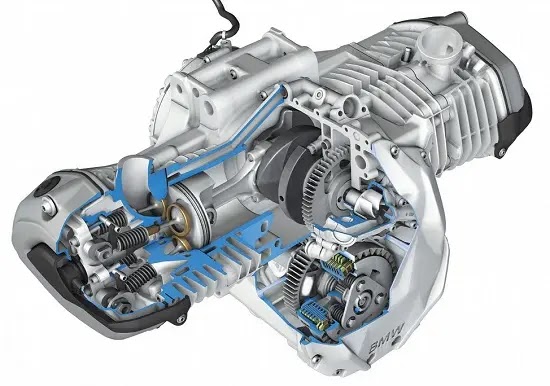
Advantages
Inherent Balance:
Flat engines are widely regarded as some of the most refined engine systems ever developed in the industry. This is because its pistons are engineered to function fluidly together, resulting in a perfect balance.
This means you will not have any problems with engine vibration, which also means more excellent long-term dependability for your vehicle. Furthermore, because flat engines are naturally balanced, there will be no need to acquire additional balancers, which may be both expensive and challenging to install in some cases.
Increased power:
It is possible to reduce the load on the crankshaft by using flat engines because of their large size and remarkable balance. This reduction has the potential to boost power transmission while maintaining consistency and smoothness significantly.
Special design:
In comparison to other engine layouts, the flat engine’s distinctive spread-out design allows it to achieve a significantly lower centre of gravity in the vehicle. This translates into improved vehicle handling, which results in a safer and more stable driving experience.
Simple cooling properties:
Oil and coolant residues in the engine are uniformly distributed due to the engine’s horizontally opposed design. On the other hand, in in-line or V-shaped engines, such residues tend to sink, whereas in-line engines tend to rise. This makes it relatively simple to cool flat engines after they have been started.
Reduced weight on the crankshaft:
This allows for less weight on the crankshaft, resulting in less power lost to rotational inertia.
Maintenance:
The task of working on cylinders that are on both sides of the motorcycle is significantly less difficult than working on regular in-line engines, where you typically have to disassemble the fuel tank (at the very least) to perform simple tasks like replacing spark plugs and checking valve clearance.
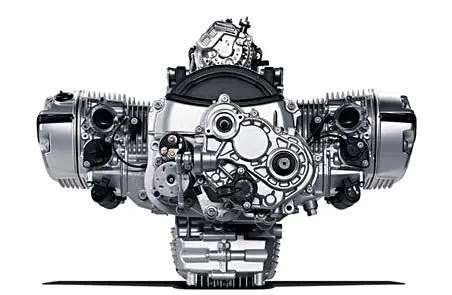
Disadvantages
- Complexity:
Two-cylinder heads/valve trains add to the complexity.
- Oil Leaks:
When it comes to oil drainage from the cylinder heads and walls of inline and vee engines, gravity is on their team. A flat, on the other hand, is a different story. The result of this is that more oil will tend to pool around valves and sit on the cylinder walls. As a result, more oil will seep past valve stem seals and piston rings, resulting in increased engine wear (especially if these parts are somehow compromised).
- Cost
Flat engines require more parts that mean more cost
No comments:
Post a Comment